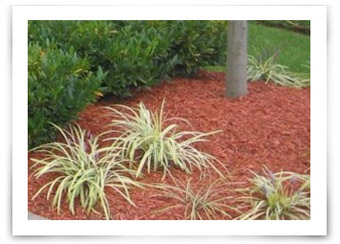Drought-Tolerant Landscaping and Gardening for Summer Lawns
At Wright Manufacturing Inc., we know a lot about maintaining lawns. But grass isn't the best choice for every climate or client. If you're a lawn care specialist, you'll increase your potential customer base by sculpting landscape designs. When it comes to the hottest of climates, your options are limited, but they may not be as limited as you think. It's quite possible to have a thriving home landscape regardless of climate.

Below are some of the best drought tolerant landscape concepts:
Home Desert Oasis
This route is a good choice for homeowners who will be involved in maintaining their landscape. Hot, dry areas can have their lawns and lots become very fertile simply by improving the soil. Your lawn care service might start a job like this by bringing in truckload after truckload of manure and mulch. Any organic material will do, but fully decomposed matters like these, as well as peat moss and compost, will work best. These materials hold a tremendous amount of water, much more so than the dry soil that so often lies beneath the average sun-beaten grass yard. But to really maximize water retention of this soil, you’ve got to get some plants in there. Look for perennial plants that can survive in hot climates, and place these strategically. Having large plants like trees actually serves to lower the surrounding temperature, especially that of the soil itself. So the more plants you are able to successfully grow, the greater chance others have of surviving, and the more the overall soil health improves. It’s the snowball effect in your favor. Obviously, you’ll need a client who has a vision for this kind of landscaping, but well-cultivated areas like this can make bordering grassy areas have a much better chance of survival in hot climates, much more so than a large, unbroken lawn.
Rugged Desert Landscape
This option is a little easier to maintain, but still requires intentional design. For a drought or desert landscape, you may want to replace grassy areas with other types of ground cover. Many landscape designers look to ground covers that are native to hot climates, like South Africa. These are commonly available in the United States and will thrive without much water at all. Add to this shady areas provided by drought-tolerant trees and shrubs, as well as rocks and walls to provide shade for ferns, mosses, and the like, and you'll be able to design a gorgeous home landscape that can survive without much rain or watering.
Wright manufactures mowers, and we love to talk lawn maintenance. But we understand that there is more than one way to design a landscape. With more and more people experimenting with the natural beauty around their homes, help accommodate your customers' dreams for all areas of their yards, even the ones that don't get mowed.


